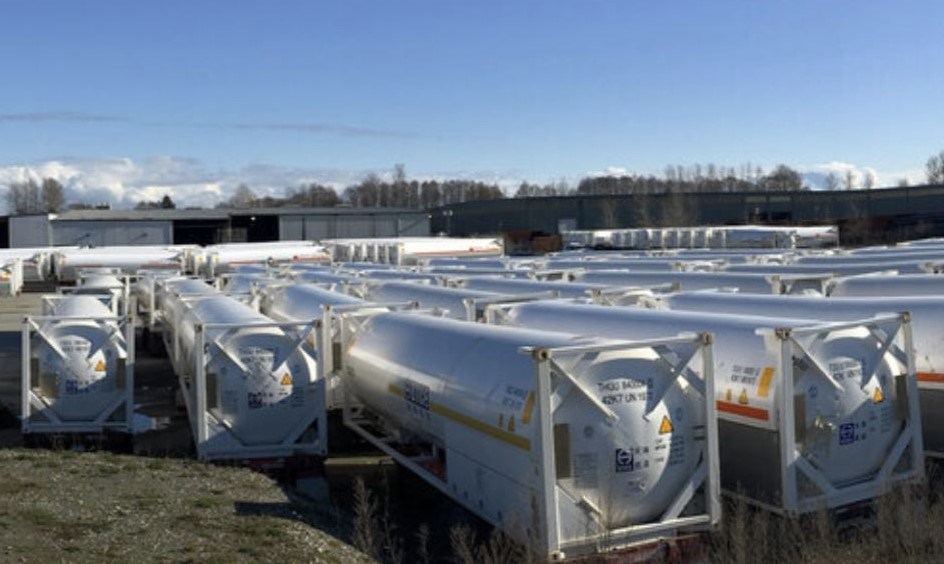Going by the submissions made during a public comment period, a proposal to build a liquefied natural gas plant near Summit Lake has failed to impress.
JX LNG Canada is seeking go-ahead from B.C. Environmental Assessment Office and the Impact Assessment Agency of Canada to build at a site known as the Hart Industrial about 11 kilometres south of the community and about 30 kilometres north of Prince George.
According to an initial project description, the plant would occupy about 250 hectares and produce up to 2.7 million tonnes per year of the product and have it shipped by rail to Prince Rupert in special ISO containers for export to Asia.
It would rely on the nearby Enbridge Westcoast Pipeline for feedstock via a two-kilometre pipeline that would be constructed as part of the project. A six-kilometre power line would also be put in place to connect to BC Hydro's Salmon Valley substation.
JX LNG Canada, is an Alberta-based subsidiary of Changchun Jixing New Energy Ltd., which is involved in the LNG and compressed natural gas sector in northeastern China.
By the closing of the comment period on Thursday, 10, comments were posted on the agencies' respective websites - six from private citizens, three from environmental advocacy groups and one from the Summit Lake Community Association (SLCA) which has taken a neutral stance on the proposal but raised several concerns.
In submissions on the B.C. Environmental Assessment Office's website, both David Suzuki Foundation and Stand Earth dispute the contention that LNG would reduce worldwide carbon emissions by displacing coal in the countries the product is shipped to - a key argument put forward by the proponent.
"As our report Burning Bridge showed, and as other studies indicate, there is little evidence that LNG exports will displace coal. In fact, there is a considerable risk more LNG infrastructure will lock out investments in renewables and an oversupplied market could depress prices and lead to the stranding of assets," David Suzuki Foundation energy transition strategist John Young writes.
Similarly, in a submission on the Impact Assessment Agency of Canada website, Alberta-based Citizen’s Oil and Gas Council maintains that while LNG may have lower burner tip emissions, once production and shipping are taken into account, the fuel produces significantly higher greenhouse gas emissions than locally-produced Asian coal.
Shipping by rail was also raised as a concern.
Rail traffic between the site and Prince Rupert is projected to increase by 5,600 to 11,200 cars per month, according to Young.
"Canadian National Railways has a history of accidents and derailment along this stretch of track, bringing increased risk of negative impacts attributable to the Project. In addition to public safety concerns, much of the CN mainline between the Project site and Prince Rupert is immediately adjacent to key rivers that support culturally important and ecologically sensitive stocks of all five Pacific salmon species as well as Steelhead," Young writes.
In its submission, the SLCA maintains the viability of the site as a place for heavy industry is based on dated information noting the land use study is more than 20 years old.
"It is clear based on current environmental trends today that assessments made previously in regards to impacts of heavy industry were often underestimated, and overlooked, resulting in the overall negative environmental impacts we see currently. This is no different when considering the Hart North Industrial site as prior analysis and understanding of impacts in the past have vastly changed in today's terms," the group says.
"The overall lack of current analysis of the viability of the proposed location is extremely concerning due to its proximity to the Summit Lake community, the lake itself and water shed, farmland, the Salmon River and many other sensitive water bodies within close proximity."
The SCLA goes on to suggest the old Winton Global mill site further north of Summit Lake could have been considered "as the site has an already established footprint and would have access to power, rail and sits near the gas line the proponent would require."
Also known as the early engagement stage, the public comment period closed on Thursday.
Next steps include the agencies jointly preparing a summary outlining the key issues and concerns identified and list First Nations that will be participating in the assessment process.
The summary will help guide JX LNG Canada Ltd as they develop a detailed project description, the BC EAO says.
"Once submitted, the detailed project description informs the EAO’s decision on whether the project is ready to proceed to an environmental assessment," the agency says.



